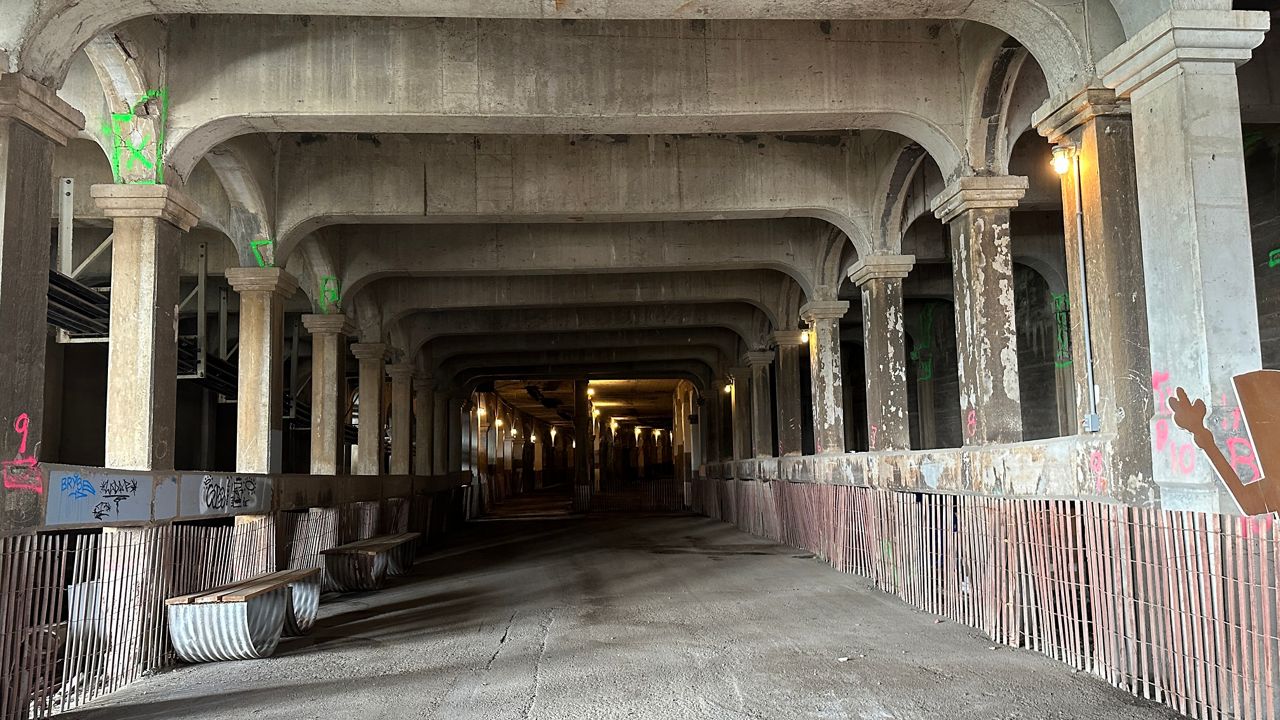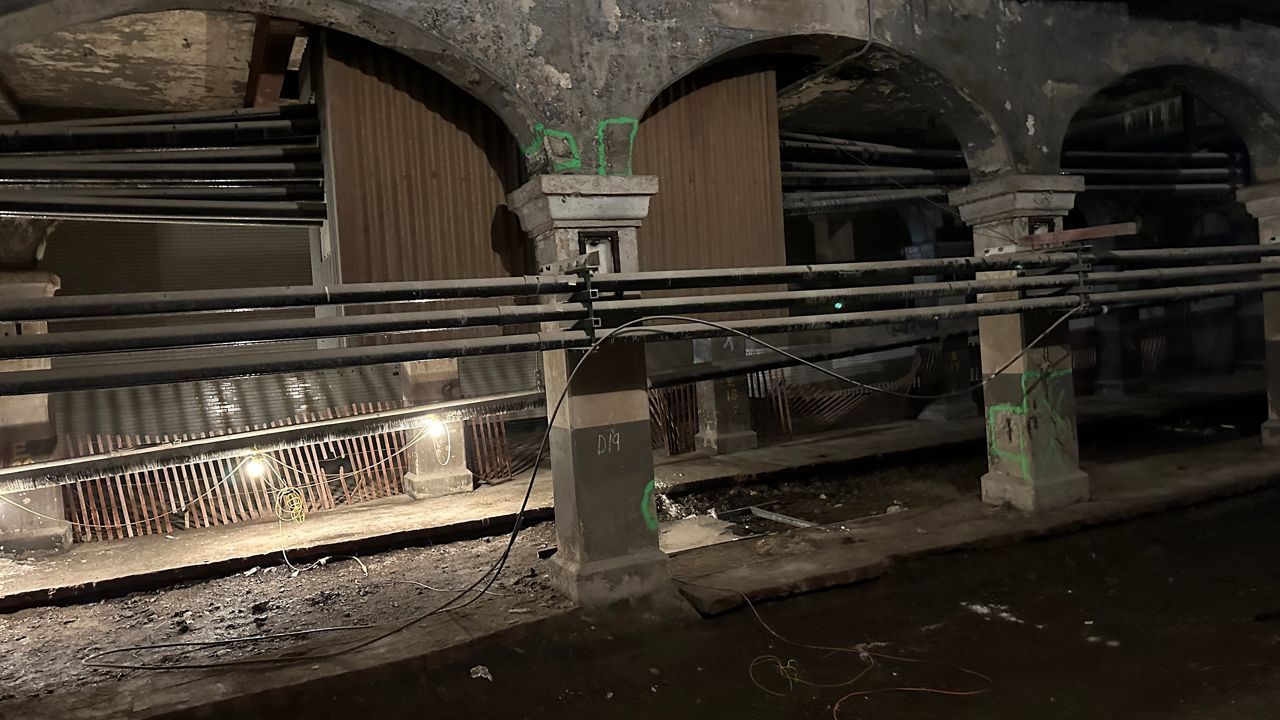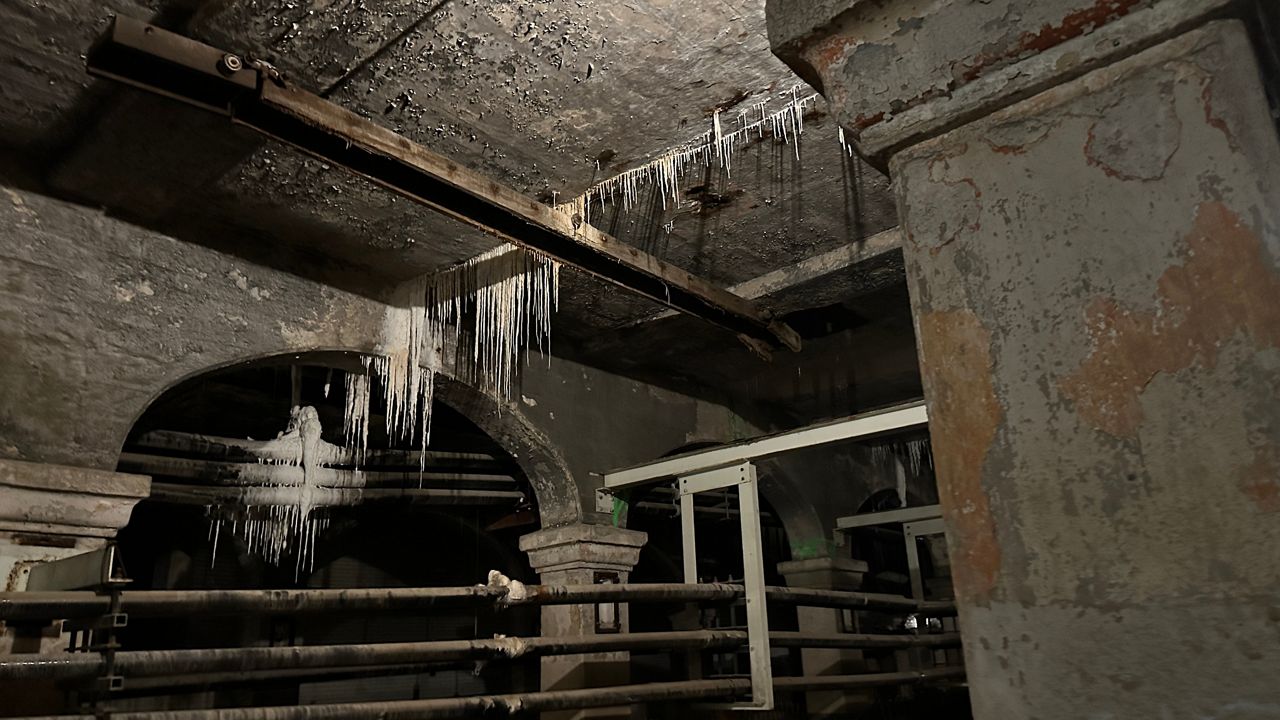CLEVELAND — More than 20 bridges cross the Cuyahoga River in Cleveland, but it’s not the cars driving across that are drawing traffic to one historic span.
“The white tile on the walls indicates that this would be a station area,” said Rick Sicha, pointing underneath the Veterans Memorial Bridge. “And actually, right below our feet is a section of track.”
As the space exists now, it’s tough to imagine it was once a busy transportation center during the early part of the 20th century. Until 1954, streetcars traveled across the river by going underground to access the lower level of what was then known as the Detroit-Superior High Level Bridge.

“All this is original,” Sicha said. “These are the original arches. This is the way it was designed and built in the 19-teens. And above us is the road with cars and trucks on it.”
As an historian, Sicha is well-versed in the facts.
“There was one year in the 1920s, there were 20 million people who rode the Detroit Avenue streetcar line,” he said.
As a native Clevelander, Sicha said he’s likely walking the same route family members once traveled.
“It was the way to get around,” he said. “You either took the streetcar or you walked.”
A streetcar named “Desire” is now displayed on the dormant tracks as a paused moment from the past, where Sicha experienced the space for the first time.
“It’s the classic, ‘You need to get out and explore your own city,’” he said.

Cuyahoga County Executive Chris Ronayne hopes others come out to “Rediscover Veterans Memorial Bridge,” as well. The space is open to the public for two days of events, marking the anniversary of the last Cuyahoga River fire in June 1969, and commemorating the 2023 Cleveland History Days.
“A century later, it’s still here and it’s here to celebrate,” Ronayne said.
At more than 3,000 feet long, it was the world’s largest double-deck reinforced concrete structure when it was built. The top level was and still is used for vehicular traffic, while the lower level was designed for streetcars and blocked off when the service stopped in the city.
“We sold off those streetcars to Toronto and places elsewhere,” Ronayne said. “Toronto went on to build a great streetcar town. But, we do have the history of transportation on this bridge.”
And the space the streetcars once used still remains, left vacant for nearly 70 years.

“It is this grand public space that tells a lot about our history of transportation, a lot about our history in construction and bridge building, the iron workers who built this,” Ronayne said.
More than 17,000 people visited the under bridge in 2019, the last time the streetcar level was opened to the public for tours. Ronayne wants it to be open permanently.
“You feel the past and present right here as we walk,” he said. “You feel the use above, which is a transportation throughput, but you see the future of a cycling throughput. Or a walking promenade.”
With parks planned on both the east and west sides, plus the freshwater below, Ronayne is inviting feedback from neighbors about how to best use the large space to connect the community.
“We are at a point where the river that once burned is a river that returned,” he said. “It’s returned to recreationists enjoying it, kayakers down below.”
Imagining the possibilities to keep progress moving forward is a vision Sicha said captures the city.
“We have the west bank of the Flats, the east bank, Terminal Tower on that side, the industrial valley over here,” Sicha said, pointing all around him. “This really is Cleveland.”
The public was invited to experience the space and share their suggestions on honoring its history while focusing on the future during a community conversation and dinner from 5 p.m. to 8 p.m. Friday and self-guided tours from 10 a.m. to 6 p.m. Saturday.



